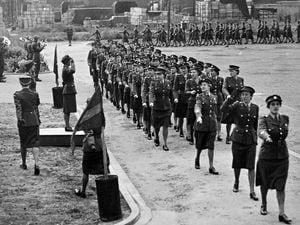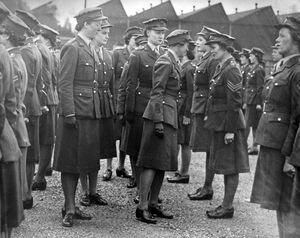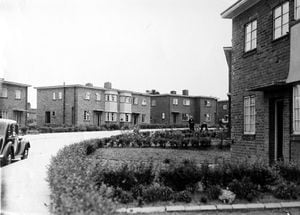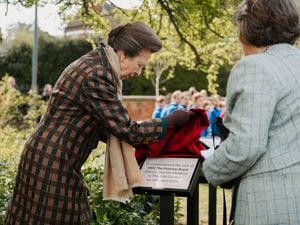Final farewell to Army life for women of ATS
They sang Auld Lang Syne, the Sergeant Major cut a cake, and the women of Central Ordnance Depot Donnington said their farewell to Army life and told our correspondent how they looked forward to new civilian lives setting up homes.

The date was Saturday, June 16, 1945 when – just over a month after the end of the war in Europe – 436 members of the Auxiliary Territorial Service, which was the women’s branch of the Army, took part in their last ceremonial parade at the military supplies depot at Donnington as they bade a formal goodbye to the camp and the service. The group to which they belonged was the second largest in the country for early demobilisation.
And a “special correspondent” from the Express & Star – there was no Shropshire Star until 1964 – was there to witness the occasion. We have dipped into our archives to resurrect the pictures our photographer took on that historic day.
“During the war years I have been privileged to see many of these women and girls in training at Donnington, at work in the depot, being inspected by the Princess Royal and high ranking Army officers, joining in a drumhead service in observation of the fifth birthday of the ATS, making homes-from-home for themselves in the villa houses on the Donnington estate in which many of them were barracked,” the correspondent wrote.

“It was with especial pride and pleasure, therefore, that I watched them signing off, as it were, on the barrack square on Saturday and joined hands with them in singing ‘Auld Lang Syne’ at the farewell party, when grey-haired Sergeant Major Lewin, known as ‘the grannie’ of the ATS at the camp, cut the big iced cake.”
The parade, the correspondent said, was in the best Donnington tradition, and was stirring to watch. The marchpast and salute was taken by the officer commanding, Chief Commander J T C Schwabe.
“Practically all the 436 girls are married and the intention of most of them was to set up homes in readiness for the return of soldier or airmen husbands.”
Corporal Lily Durrell, whose civilian husband worked in Oakengates, had a living-out pass to live in rooms there.
“She declared that the first thing she wanted to do was to find a house of her own, a remark echoed by numerous others.”

The Royal Army Ordnance depot had in just a few years transformed Donnington, which had been little more than a village until its arrival.
In 1938 the War Department had asked Wellington Rural District Council to build housing for the civilians who would be working at the planned new complex.
The scheme was initially for 500 houses to be built south of the depot, close to the Wellington to Newport road, and by 1945 the estate comprised 844 houses, homes to about 4,000 people.
At its heart was The Parade shopping centre, and sites were earmarked for schools, clinics and places of worship.
Work was in full swing by May 1940, but the war situation then led to labour shortages, and Royal Engineers were drafted in to lend a hand.
A shortage of timber led to changes to the design of the houses, the biggest of which was to substitute flat concrete roofs for the planned pitched roofs.





